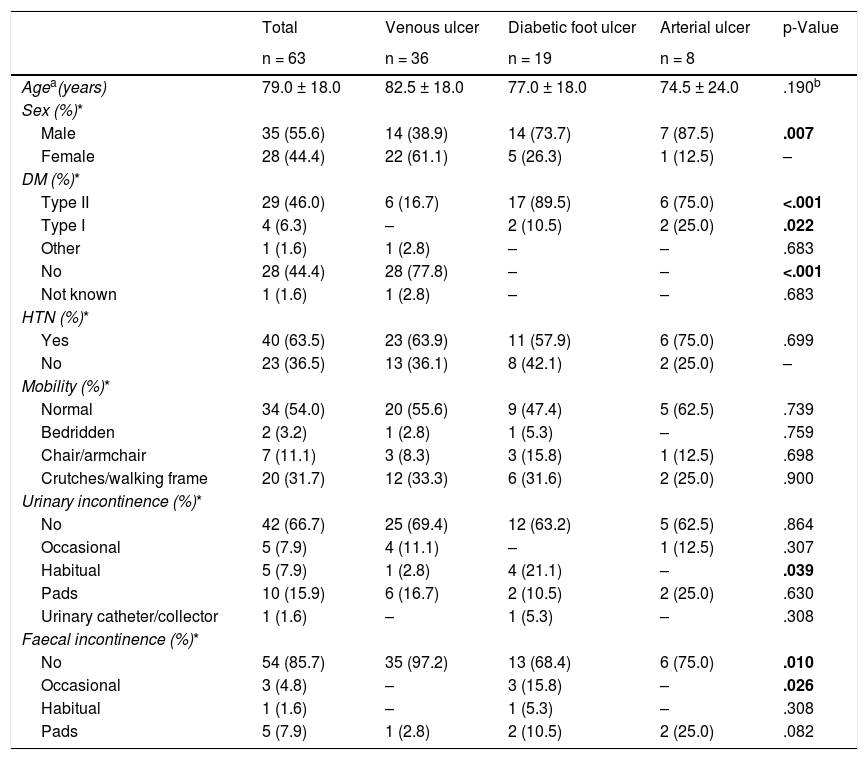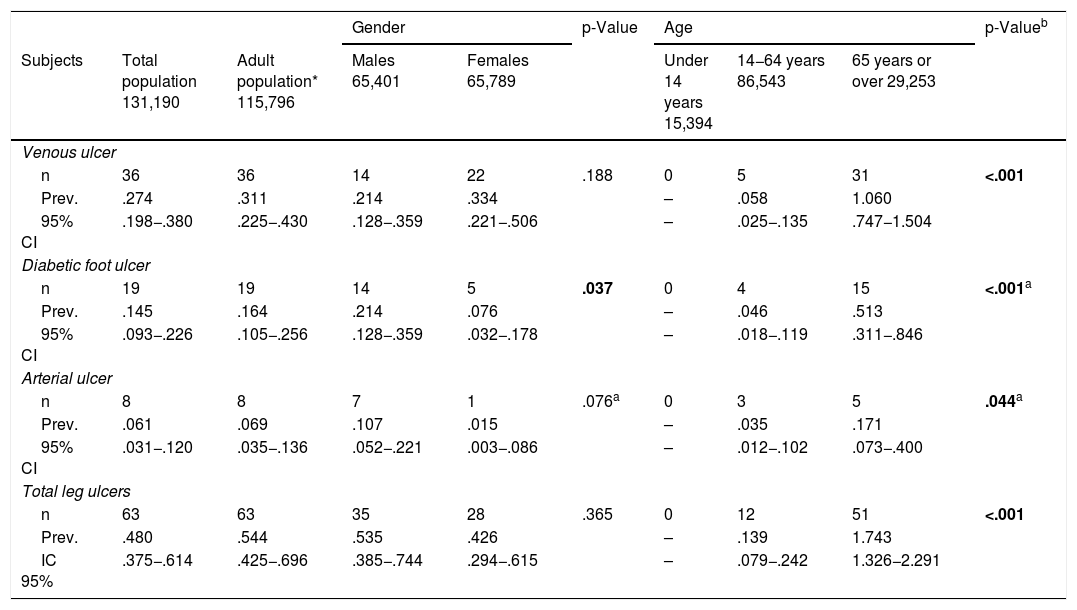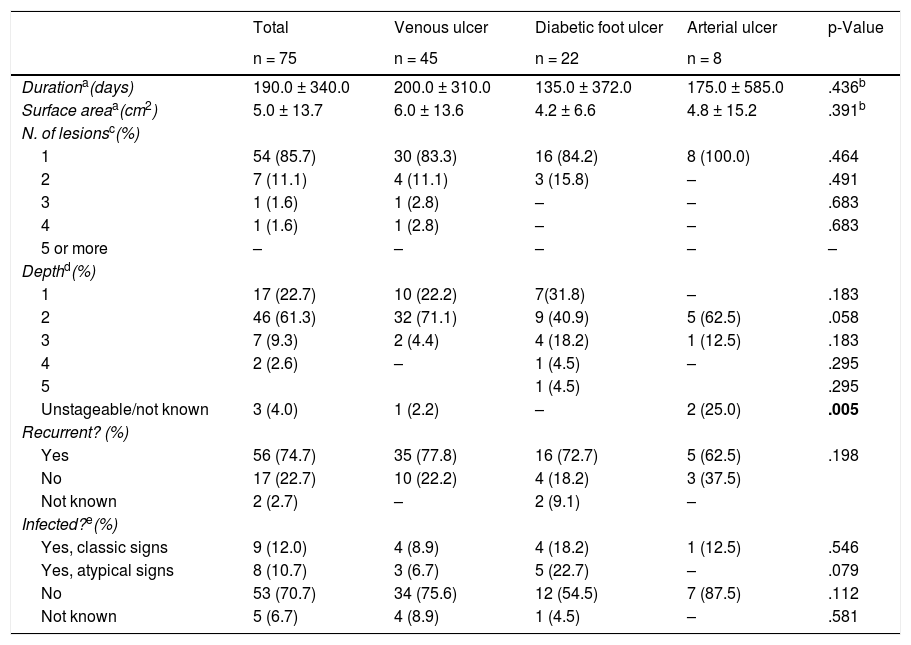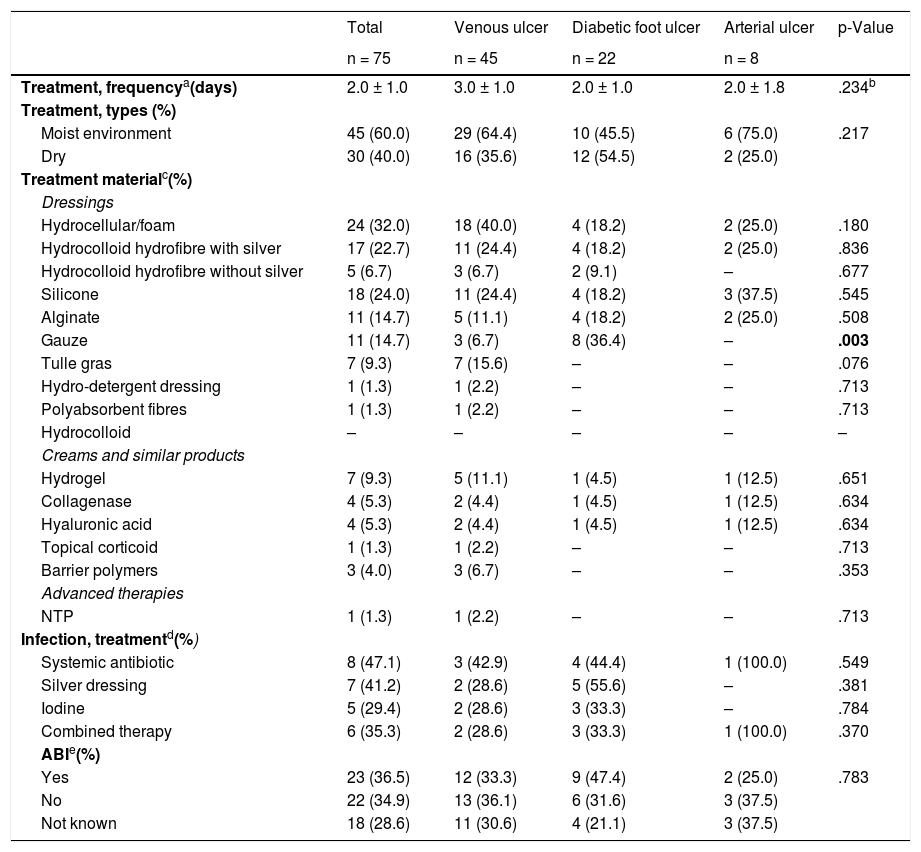To determine the prevalence of leg ulcers, and to describe the affected patients, wounds, and treatment.
MethodObservational, cross-sectional prevalence study. An ad hoc online questionnaire was sent to all nurses attending Primary Care centres of the “Gerencia de Atención Integrada de Cuenca” (Integrated Care Management of Cuenca, Spain). Data regarding patient sociodemographic and clinical variables, lesion characteristics and the type of intervention (concerning prevention and treatment) were collected.
ResultsIn total, 152 professionals (response rate = 98.1%) completed the questionnaire, collecting data from 131,190 inhabitants. A total of 63 patients (75.5 ± 12.6 years old) with 75 ulcers were identified, finding an overall prevalence of .480‰ (CI 95%: .375−.614), distributed as: venous ulcer .274‰ (n = 36), diabetic foot .145‰ (n = 19), and arterial ulcer .061‰ (n = 8).
The prevalence was similar regarding gender (.535‰ vs .426‰, respectively, p = .365), but men exhibited more diabetic foot (.214‰ vs .076‰, p = .037).
In all three types of lesions prevalence increased with age, reaching 1.743‰ in 64+ age group.
The median of the leg ulcer duration and corrected area were 190.0 ± 340.0 days and 5.0 ± 13.7 cm2, respectively, with a recurrence rate of 74.7%.
ConclusionsThe prevalence of chronic leg ulcers was lower than that reported in other studies, although with high recurrence rates. Overall estimators from previous studies may have overestimated the prevalence, especially in regions with a high rural component.
Determinar la prevalencia de úlceras de pierna, y caracterizar los pacientes afectados, las lesiones y el tratamiento recibido.
MétodoEstudio observacional, transversal de prevalencia. Se diseñó un cuestionario online ad hoc que se envió a todas las enfermeras de Atención Primaria de la Gerencia de Atención Integrada de Cuenca (España), y se recogieron variables relativas a los pacientes estudiados (sociodemográficas y clínicas), a las lesiones y a las intervenciones recibidas (preventivas y de tratamiento).
ResultadosContestaron 152 profesionales (tasa de respuesta = 98,1%), y fue posible estudiar a 131.190 habitantes. En total, se identificaron 63 pacientes (edad = 75,5 ± 12,6 años) con 75 lesiones, por lo que la prevalencia global fue de 0,480‰ (IC 95%: 0,375−0,614), y las lesiones se distribuyeron como: úlcera de etiología venosa 0,274‰ (n = 36), pie diabético 0,145‰ (n = 19), y úlcera de etiología arterial 0,061‰ (n = 8). La prevalencia fue similar en hombres y mujeres (0,535‰ vs 0,426‰ respectivamente, p = 0,365), pero los hombres mostraron más pie diabético (0,214‰ vs 0,076‰, p = 0,037). Para los tres tipos de lesiones, las prevalencias aumentaron al subir la edad, llegando a 1,743‰ en mayores de 65 años. La mediana de duración y el área corregida de las úlceras fue 190,0 ± 340,0 días y 5,0 ± 13,7 cm2, respectivamente, y el 74,7% fueron recurrentes.
ConclusionesLa prevalencia de úlceras de pierna encontrada es inferior a la de otros estudios, aunque con altas tasas de recurrencia. Los estimadores globales de estudios anteriores pueden haber sobreestimado la prevalencia, especialmente en regiones con un alto componente rural.










